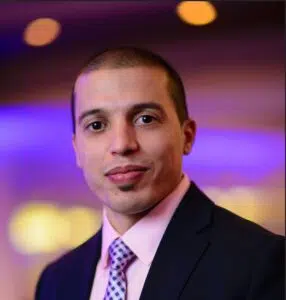Table of Contents
Introduction
Canada is a unique example of a country that officially recognizes two languages—English and French at the federal level. But how many languages are spoken in Canada in total? More than 200. This linguistic richness poses both opportunities and challenges.
So, why does Canada have two official languages, and how does it manage to uphold bilingualism while being functionally multilingual? This blog explores Canada’s official languages, the structure of its language policy, and the valuable insights other countries can draw from it.
How Canada Balances Two Official Languages
Balancing two official languages in Canada means providing equitable access to government, education, and legal services in both English and French. From bilingual signage in federal buildings to language-specific schools and public media, Canada ensures that both linguistic communities are supported and represented. This effort is not only legal but deeply cultural, contributing to a national identity built on inclusion.
The strength of Canada’s bilingual framework lies in its legal structure, funding mechanisms, and regional flexibility, which make the model adaptable and enduring. Other multilingual countries can learn from how Canada protects language rights while embracing diversity.
The History Behind Canada’s Official Languages

Why does Canada have two official languages?
Canada’s bilingual foundation dates back to the 18th century, when French and British colonial forces laid claim to various regions. The British North America Act (1867) acknowledged both languages in Parliament and courts. Later, the Official Languages Act (1969) and the Canadian Charter of Rights and Freedoms (1982) gave citizens the legal right to access government services in either English or French.
These legal milestones established the framework for official bilingualism, aiming to ensure equity between English and French speakers nationwide.
Language Policy in Government and Public Services
Canada’s language policy is more than symbolic—it is embedded in governance and public service delivery.
- Canada’s official languages are used in Parliament, federal courts, and all federal agencies.
- Bilingual government services are offered where significant demand exists.
- Job postings in public institutions often require proficiency in both English and French.
- Bilingual signage and official documents are a standard across Canada.
This policy aims to maintain linguistic balance. In Quebec, French dominates. In provinces like Alberta and B.C., English is more common, but French services remain available, demonstrating a flexible yet consistent approach.
Bilingualism in the Education System
Education plays a crucial role in maintaining Canada’s two official languages. Section 23 of the Charter grants parents the right to have their children educated in their minority official language.
- French-language schools serve Francophone communities across English-majority provinces.
- English-language education is available for Anglophones in Quebec.
These institutions promote linguistic preservation and cultural understanding, making education a cornerstone of Canada’s language policy.
The Reality of Multilingualism in Canada

Canada may be officially bilingual, but it’s functionally multilingual. According to Statistics Canada, over 7 million Canadians speak a language other than English or French at home. These include:
- Immigrant languages: Punjabi, Mandarin, Arabic, Tagalog, Spanish
- Indigenous languages: Cree, Ojibwe, Inuktitut
This reality challenges the dominance of the two official languages and has sparked national debates about the inclusivity of immigrant and Indigenous languages in public life.
Related: Should English Be the Official Language of the United States A Look at Both Sides
Indigenous Languages and Reconciliation Efforts
How is Canada preserving Indigenous languages?
In response to the Truth and Reconciliation Commission, Canada passed the Indigenous Languages Act (2019), recognizing these languages as an integral part of Canadian heritage. The Act supports:
- Community-led revitalization efforts
- Language education and immersion programs
- Funding for Indigenous language infrastructure
Preserving Indigenous languages isn’t just cultural—it’s about reconciliation, equity, and justice.
Lessons for Other Multilingual Countries
Is Canada’s bilingual model exportable?
Yes—but with conditions. Canada’s approach works because of:
- Legal recognition of language rights in the Constitution
- Public funding for bilingual education and services
- Enforcement mechanisms to ensure compliance
- Institutional support (e.g., Commissioner of Official Languages)
However, this model isn’t one-size-fits-all. Countries like Belgium, Switzerland, India, and South Africa have developed their own systems, with varying success.
For example:
- Belgium’s bilingualism is regionally divided and politically tense.
- Switzerland supports four national languages through decentralization.
- India recognizes 22 scheduled languages but struggles with implementation.
Related: Why The United States Doesn’t Need an Official Language
Final Thoughts
Canada’s experience with bilingualism shows that language inclusion is possible with the right balance of law, policy, and cultural will. While not perfect, the system supports linguistic rights while adapting to a changing demographic landscape.
At Translation Excellence, we believe language isn’t just a tool—it’s a bridge. Canada’s evolving language policy serves as a reminder that respect for linguistic diversity strengthens social unity, and that’s a message every country can learn from.
Related: Language Suppression vs. Preservation: A Look at Banned Languages in History


